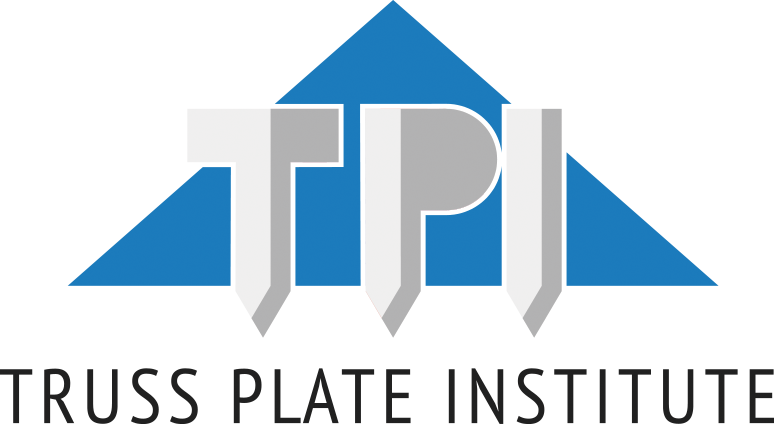History
Prior to founding of the Truss Plate Institute in 1960, plate manufacturers had to work with Federal Housing Administration (FHA) and the many various local code jurisdictions in having their products and designs recognized. From 1950 through 1959, a plethora of truss design methodologies and testing procedures existed for plate connectors, nailed plywood or nail-glued plywood, bolts, split rings, and so on. Generally, joint design criteria relied either on wood-to-steel-to-wood or wood-to-wood bearing for transmitting stresses. Additionally, numerous plate manufacturers' proprietary design methodologies were the norm. The confusion this created with model codes, local code jurisdictions and FHA raised persistent questions regarding structural adequacy.
The founding fathers of TPI recognized that an industry-wide truss design standard was critical for the organized growth of the fledgling industry. Previously, FHA required testing each type of variation of trussed rafters designed by plate manufacturer proponents in order to provide a consistent basis for determining structural acceptance. The resulting costs incurred by the plate manufacturers and the phenomenal workload thrust on the FHA insuring offices quickly prompted the development of standard engineering and fabrication procedures as an alternative to testing in order to assure that unit stresses of lumber and connectors were not exceeded.
Recommended allowable strength design criteria were first formulated prior to the formation of TPI based on work of an interim committee in 1959. These design criteria were published the following year with the designation TPI-60 "Design Specification for Light Metal Plate Connected Timber Trusses." Since that time, the Technical Advisory Committee has continued to study and evaluate new data and development in the metal plate connected wood truss industry. Subsequent editions have followed over the years as listed in the TPI Store and Archives.
TPI continues with its historic tradition through its ongoing development of TPI guidelines and standards and other activities that help maintain the structural building components industry and in particular the metal plate connected wood truss industry on a sound engineering basis. Metal plate connected wood trusses provide safe, efficient and reliable engineered structural components which provide viable engineered building solutions necessary for today’s building industry. TPI is and will continue to provide services, products, guidelines, and standards to support and advance the industry. Visit other areas of our website to find out more about all of the TPI offerings.



